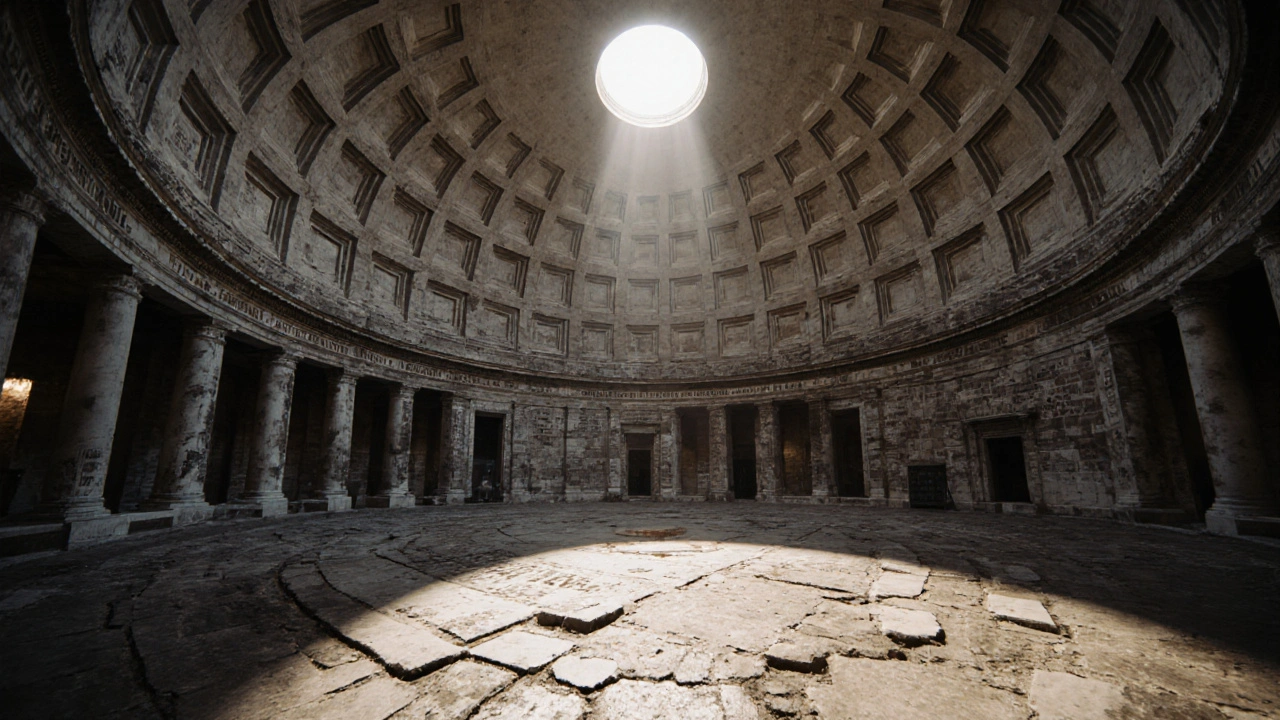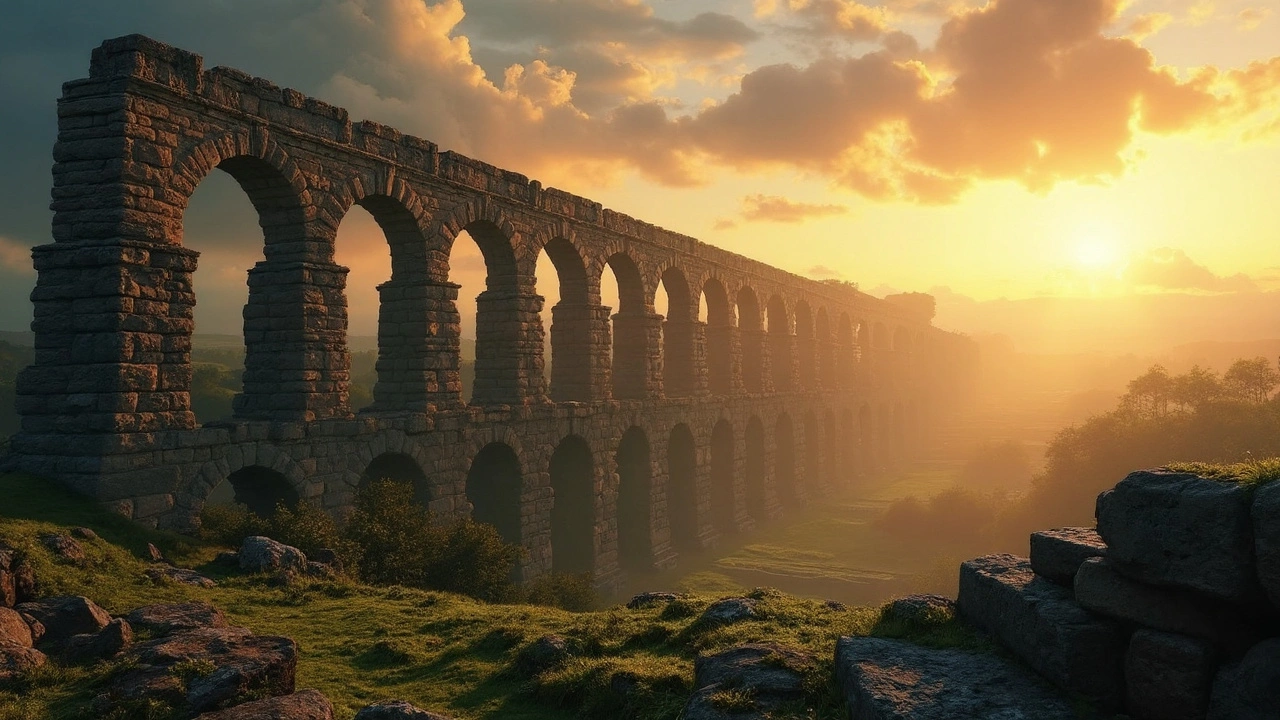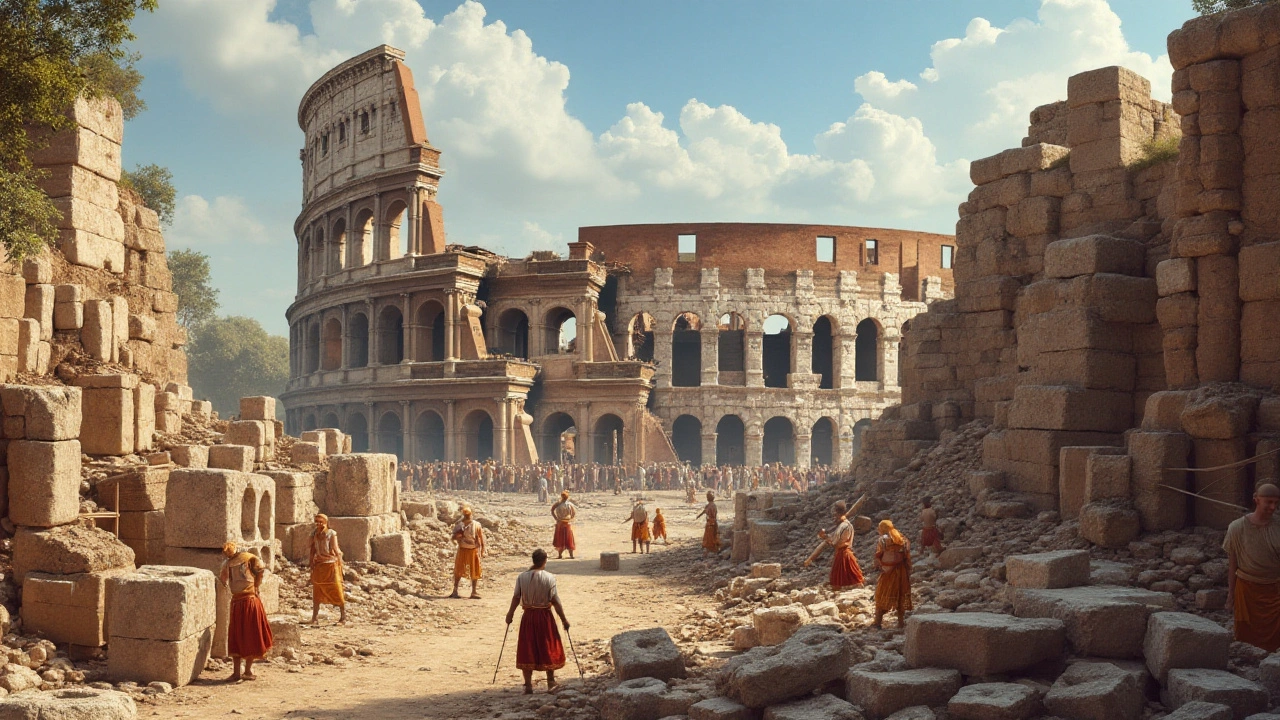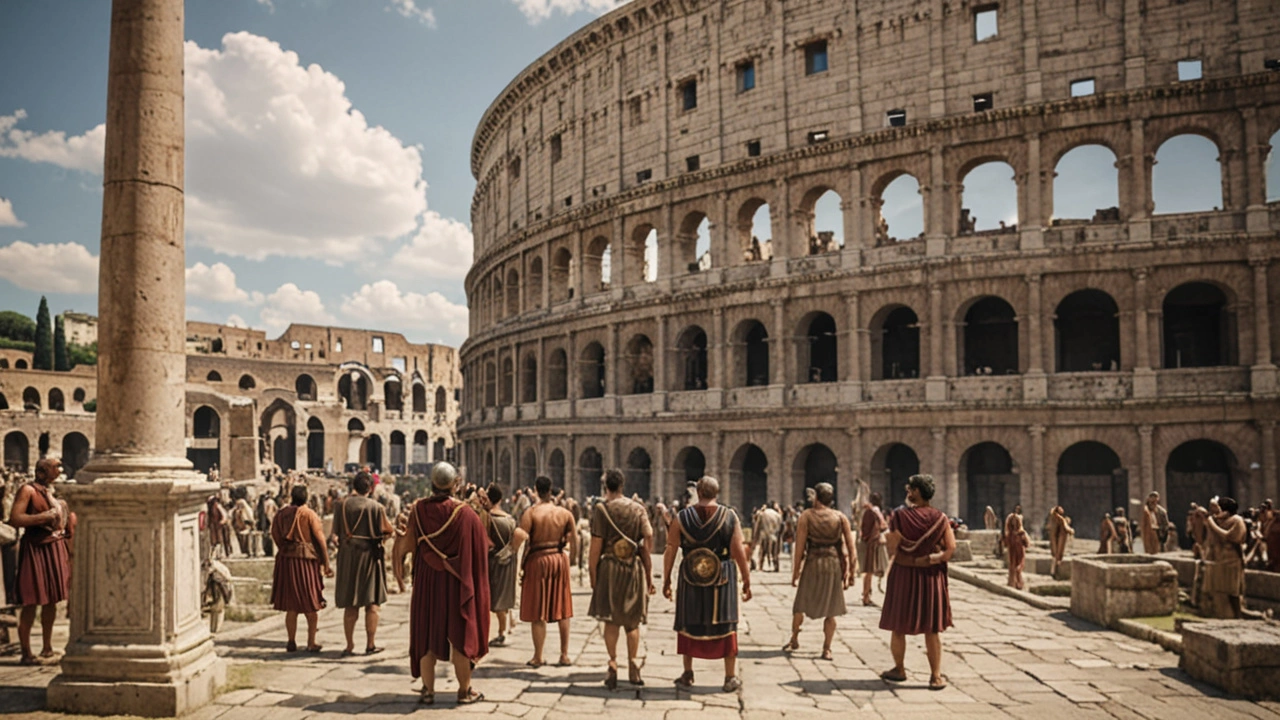Roman architecture: How ancient builders shaped modern cities
Roman architecture still controls what we build and how cities work. You see it in bridges, public baths, government buildings, and even in our idea of a plaza. The Romans nailed practical design: move water, move people, impress everyone. They used arches, vaults, domes, and a special concrete that set underwater.
Look for rounded arches, repeating vaults, thick supporting piers, and large open interiors like basilicas or baths. Aqueducts are obvious: a steady line of arches carrying water. Amphitheaters and arenas use tiered seating and radial corridors. Columns show the order—Doric, Ionic, or the later Corinthian—often stacked for effect. Mosaics, frescoes, and sculpted reliefs add decoration but rarely block function.
Key engineering tricks
The Roman secret was mixing smart geometry with durable materials. Their concrete, opus caementicium, used lime and volcanic ash to resist water and time. Arches spread weight to the sides, letting builders create bigger openings without giant solid walls. Domes and barrel vaults turned heavy stone into wide, open rooms. Roads used layered materials and drainage to stay usable for centuries. Those are design lessons you can use today: think layers, control water, and let structure do the work.
Why it still matters
Roman planning shaped cities with clear public spaces, straight roads, and service systems. Modern planners borrowed forums as civic centers and cardo and decumanus street grids for orientation. Public infrastructure like sewers and aqueducts show that good utilities matter as much as pretty facades. For architects and homeowners, Roman ideas translate into practical moves: place windows to capture light and air, use arches to create larger openings, and prioritize durable materials for long life.
Where to see Roman work now? Rome is the obvious stop, but check out Nîmes for a near intact arena, Pont du Gard for aqueduct engineering, and Bath in England for thermal complexes. In many European towns, medieval and later buildings reuse Roman foundations. That reuse is a tip: durable base layers last centuries and let styles change above them.
Quick tips for designers and renovators: use rhythmic openings to break long walls, add shallow domes or vaulted ceilings to enlarge small rooms, and choose masonry or concrete mixes that resist moisture. When renovating historic buildings, keep the load paths clear—don’t block how weight transfers through arches and piers.
Roman architecture blends beauty with function. If you want classic looks without myths, copy the method not the costume: focus on structure, manage water, and design for public life. That approach explains why stones laid two thousand years ago still teach architects today.
A quick checklist before you start a project: check existing foundations for cracks and moisture, map natural light paths at different times of day, use local durable materials to reduce maintenance, plan water drainage away from walls, consider arches or beams to free up floor space, and keep public areas flexible so they can serve different needs. Small planning saves repair costs and keeps character intact.
Think long term always.

Ancient Roman Architecture: How Rome Built an Empire with Stone and Concrete
Ancient Roman architecture revolutionized construction with concrete, arches, and aqueducts. Its innovations in engineering and urban design still shape buildings and cities today.
Read more
Ancient Roman Architecture: Inside Its Monumental Legacy
Ancient Roman architecture didn’t just change the way buildings looked—it redefined what was possible. This article digs into the remarkable legacy of Roman engineering, spotlighting what made their designs last and how they still shape modern construction. Get tips on recognizing genuine Roman features and find surprising facts about structures like the Colosseum and aqueducts. See why the practical side of Roman genius matters today, and catch a few hacks for spotting Roman influence wherever you go. Dive deep into a world where bricks, arches, and concrete weren’t just materials—they were game-changers.
Read more
The Marvels of Ancient Roman Architecture: Materials and Methods
Discover the ingenious materials and techniques used by ancient Romans to construct some of the most iconic structures in history. Explore the types of materials they used, their construction methods, and the lasting impact these innovations have had on modern architecture.
Read more
Unlocking the Secrets of Ancient Roman Architecture
Ancient Roman architecture has long fascinated historians, architects, and scholars. This article delves into the various elements of Roman design, including their use of materials, innovative construction techniques, major architectural structures, and the cultural significance of their buildings. Whether you're a history buff or just curious about ancient engineering, this piece provides a comprehensive look at what made Roman architecture so unique and enduring.
Read more
Exploring the Architectural Brilliance of Ancient Rome
Dive into the inventive world of Ancient Roman architecture to uncover the ingenuity behind their building techniques and designs. From the awe-inspiring Colosseum to the ingenious aqueducts, this article reveals how the Romans were not just builders but visionaries. It explores the legacy they left in the architectural domain, demonstrating their influence on modern buildings. Get ready to be mesmerized by the genius of Roman architecture and its impact on the world.
Read more